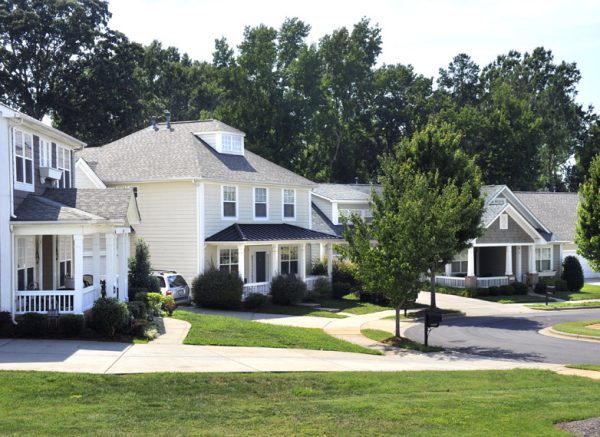House Bill 150 deserves our support

The debate over “Zoning/Design & Aesthetic Controls,” (House Bill 150) concerns two basic issues: first, how much control we want government to have over our power of consumer choice, and second, whether we want government in North Carolina to function as its founding fathers intended. Let’s address the latter issue first.
To understand why the Real Estate and Building Industry Coalition (REBIC) and other industry groups support this bill, one has to understand the basic constitutional structure of government in our state. Unlike many of our neighbors, which prioritize local control and “home rule,” North Carolina is fundamentally a “Dillon Rule”’ state, in which local governments function as extensions of the General Assembly and may exercise only powers expressly granted them through state legislation. That’s why many of the bills passing through the General Assembly each session deal with local issues, such as letting a city transfer property or a county enter into design-build contracts for bridge repair.
| This commentary is one part of a pro/con package. The opposing view: Bill would shut down community choice |
The authority to enact and implement a local zoning ordinance is expressly granted by the state for a specific set of purposes. North Carolina General Statute 160A-381 reads, “A zoning ordinance may regulate and restrict the height, number of stories and size of buildings and other structures, the percentage of lots that may be occupied, the size of yards, courts and other open spaces, the density of population, the location and use of buildings, structures and land.”
Read that language again. Nowhere in it do you see any mention of exterior materials, whether the house has a porch, how far the garage can be from the front of the home, or other architectural elements. By the plain language of state law, local governments do not have the authority to regulate design through their zoning ordinances. This single point forms the foundation for our support of HB 150. It renders irrelevant the policy debate over whether local governments should regulate architectural design – the blunt reality is that under current law they cannot.
Clearly, many cities and towns across North Carolina have been regulating residential design for some time. In Mecklenburg County, the towns of Huntersville and Davidson require garages to be set back a specified distance from the front of a home. The Town of Mint Hill requires half the homes in a Conservation Subdivision to be constructed completely from brick. The City of Charlotte is considering mandating a certain number of windows be included on the side of a house that sits on a corner lot. Add in the hundreds of design conditions foisted upon rezoning approvals over the years, and it begs the question, is all of this illegal?
In a word, YES. Which is why state Sen. Dan Clodfelter, D-Mecklenburg, introduced legislation in 2011 to clarify that the regulation of aesthetic design was prohibited, at least where residential construction is concerned. Last fall, a ruling by the N.C. Supreme Court did something else — in Lanvale Properties, LLC v. Cabarrus County, the court said an Adequate Public Facilities ordinance on the books in one Charlotte-area county was illegal because the Board of Commissioners never requested, nor was granted, any authority to impose one.
Writing for the court, Justice Barbara Jackson wrote that a local government’s zoning authority “cannot be exercised in a manner contrary to the express provisions of the zoning enabling authority.” This ruling clearly articulates that local governments cannot assume zoning powers which they have not expressly been granted. So even if a city or town was imposing residential design standards through a liberal reading of the state zoning statute that implied such authority, the Lanvale ruling says those standards are illegal.
But let’s move beyond the legal foundation for HB 150 and consider the first issue we raised: Even if local governments did not need explicit statutory authority to impose residential design requirements, would such regulation be sensible? We think the answer is no.
The home building industry spends millions each year researching buyer preferences so builders can design plans tailored to each local market and price point. This research most often shows that homebuyers, particularly those making their first purchase, are less concerned about whether their house is covered in brick or Hardiplank, and more concerned with whether they can afford their monthly mortgage payment. Residential design requirements not only interfere with consumer choice, they can add thousands to the cost of a new home, putting homeownership out of reach for countless working families across North Carolina.
HB 150 does not prohibit design requirements in local historic districts or areas listed on the National Register of Historic Places. It does not interfere with neighborhood covenants or private contracts. It does not prevent property owners from freely offering architectural conditions as part of a rezoning or development approval. It will, however, ensure that housing in North Carolina remains affordable, and preserve the rights of builders and consumers to decide what their home should look like.
Opinions in this article are those of the author and not necessarily those of the UNC Charlotte Urban Institute or the University of North Carolina at Charlotte.